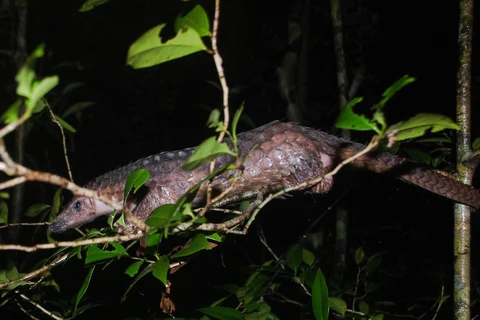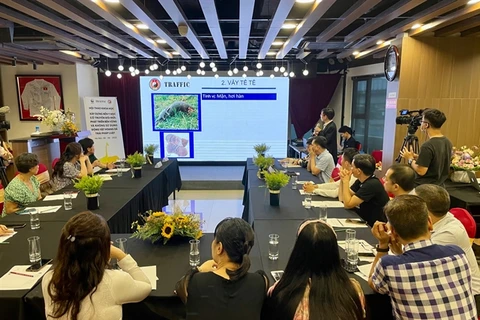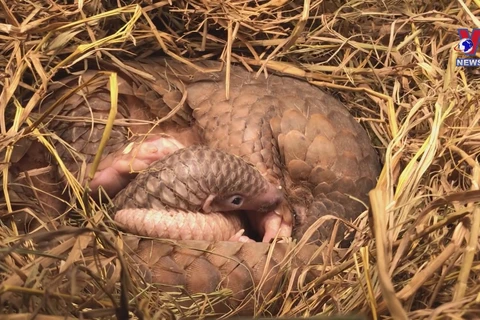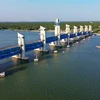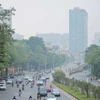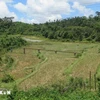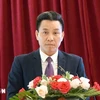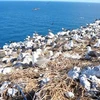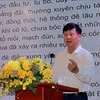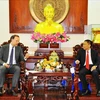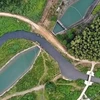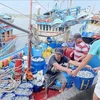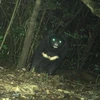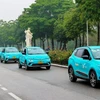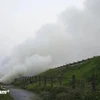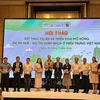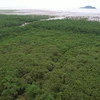Hanoi (VNA) – The US Agency for International Development (USAID) will help Vietnam control illegal wildlife trafficking through a 15 million USD project launched in Hanoi on June 13.
The launch of the five-year project on saving threatened wildlife was held by the Vietnamese Ministry of Agriculture and Rural Development (MARD) and USAID.
The project aims to improve Vietnam’s leadership capacity in handling wildlife crime by enhancing commitments from leaders at national and provincial levels, improving the efficiency of law enforcement and reducing the demand and consumption of wildlife products.
“Through this new project, USAID will work with MARD to reduce demand for and consumption of illegal wildlife products, and save our threatened species,” said Ann Marie Yastishock, USAID/Vietnam Mission Director.
“The effective implementation of the Saving Threatened Wildlife project will help address the issue of illegal wildlife trafficking, and therefore reflect the highest commitments of the Government of Vietnam in this effort, contributing to biodiversity conservation and environment protection in Vietnam,” said Deputy Minister of Agriculture and Rural Development Le Quoc Doanh.
The new project focuses on protecting species that are at risk of international trafficking into Vietnam such as African rhinos, African and Asian elephants, and pangolins, as well as animals that are regularly poached and traded domestically or internationally, such as primates, muntjacs, and big cats.
It is implemented by the World Wide Fund for Nature, in cooperation with the Wildlife Trade Monitoring Network (TRAFFIC) and the Education for Nature Vietnam (ENV).
The Saving Threatened Wildlife project builds and expands on the progress achieved by USAID’s previous five-year (2016-2021) project, Saving Species. The Saving Species project supported the Vietnamese Government to improve and harmonise the legal system related to wildlife protection, strengthen law enforcement and prosecution of wildlife crimes, and reduce demand and illegal consumption of wildlife.
Vietnam has already taken action to deal with illegal wildlife trade, including improving legal regulations.
Notably, the Prime Minister on May 17 issued Directive No. 4/CT-TTg on a number of tasks and solutions to protect migratory and wild birds in Vietnam.
The country has also been participating in international treaties, institutions and cooperation in biodiversity conservation and combating illegal wildlife trade./.
The launch of the five-year project on saving threatened wildlife was held by the Vietnamese Ministry of Agriculture and Rural Development (MARD) and USAID.
The project aims to improve Vietnam’s leadership capacity in handling wildlife crime by enhancing commitments from leaders at national and provincial levels, improving the efficiency of law enforcement and reducing the demand and consumption of wildlife products.
“Through this new project, USAID will work with MARD to reduce demand for and consumption of illegal wildlife products, and save our threatened species,” said Ann Marie Yastishock, USAID/Vietnam Mission Director.
“The effective implementation of the Saving Threatened Wildlife project will help address the issue of illegal wildlife trafficking, and therefore reflect the highest commitments of the Government of Vietnam in this effort, contributing to biodiversity conservation and environment protection in Vietnam,” said Deputy Minister of Agriculture and Rural Development Le Quoc Doanh.
The new project focuses on protecting species that are at risk of international trafficking into Vietnam such as African rhinos, African and Asian elephants, and pangolins, as well as animals that are regularly poached and traded domestically or internationally, such as primates, muntjacs, and big cats.
It is implemented by the World Wide Fund for Nature, in cooperation with the Wildlife Trade Monitoring Network (TRAFFIC) and the Education for Nature Vietnam (ENV).
The Saving Threatened Wildlife project builds and expands on the progress achieved by USAID’s previous five-year (2016-2021) project, Saving Species. The Saving Species project supported the Vietnamese Government to improve and harmonise the legal system related to wildlife protection, strengthen law enforcement and prosecution of wildlife crimes, and reduce demand and illegal consumption of wildlife.
Vietnam has already taken action to deal with illegal wildlife trade, including improving legal regulations.
Notably, the Prime Minister on May 17 issued Directive No. 4/CT-TTg on a number of tasks and solutions to protect migratory and wild birds in Vietnam.
The country has also been participating in international treaties, institutions and cooperation in biodiversity conservation and combating illegal wildlife trade./.
VNA

